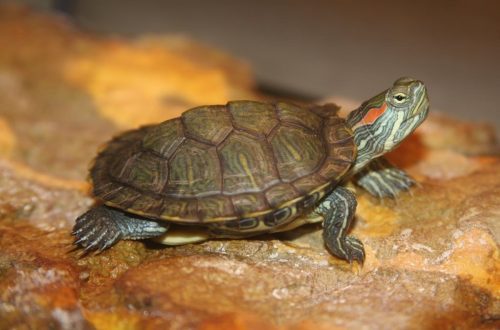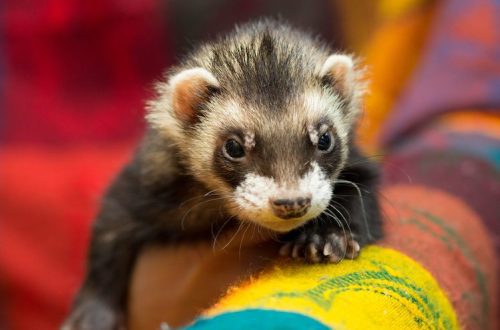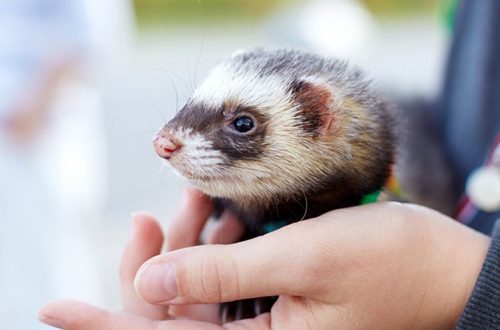
Interesting facts about the spider-cross, its structure, appearance and level of bite poisonousness
The spider-cross belongs to the family of orbs. They live in almost every country, except for the southern and northern latitudes. This type is the most common. There are 2000 species of this spider in the world, about 10 species live in Russia. Most often, this insect can be found in the Republic of Mordovia, Astrakhan, Smolensk and Rostov regions.
Favorite places of the insect: fields, gardens, shrubs near water bodies, groves, forests, in very rare cases they live on the facades of walls and cornices of buildings. Mostly crosses choose places with very high humidity.
The crowns of trees in neglected gardens or impenetrable forests have become a favorite place for the cross-spider. It is possible to determine that this spider lives here by the wheel-shaped web. Considering that the web itself is destroyed under the influence of other insects, wind, trees, people, they are forced to dissolve it every two days and weave it again.
Contents
Appearance of the insect
Because of the peculiar cross on the back, the spider got its name – the cross. The cross itself is formed from white and light brown spots. The belly of the creature is round, brown. On the body there are 4 pairs of legs, which are distinguished by hypersensitivity, and 4 pairs of eyes, directed in different directions. The eyes of an insect make it possible to view the world around us from all sides. Interesting detail: spiders have blurry vision, they see only the outlines of objects or their shadows.
Females are almost twice as large as males. For comparison: the size of females varies between 17-26 centimeters, and males – 10-11 cm. After certain periods, cross-spiders molt and shed their chitinous cover. This period is characterized by active growth.
The special activity of insects is noted at night, during the day they hide in their shelters. At night they spin webs. During the day, females can also become more active.. It can be hunting for flies, butterflies. The unique creature freezes in one position, which at first glance gives the impression that he is dead, but this is a trick for the victim.
The external structure of the cross-spider
Spiders have 8 legs, with very sensitive olfactory organs. Their abdomen is rounded, resembling a droplet. On the abdomen are spots that form the shape of a cross. There are 4 pairs of eyes on the head, which make it possible to provide a wide view. Spider-spider poisonous hunterTherefore, vision for him is a matter of life and death.
What do amazing insects eat?
This species is carnivorous. For food they need aphids, flies, mosquitoes, midges. Spiders wait for their potential prey in the middle of the web.to which the signal thread is attached. As soon as the insect flies up to the web and gets into it, then trying to get out, they create a vibration of the web, so the cross in the center receives a signal about a potential victim. Considering that there are olfactory organs on the legs of cross-spiders, they can also hear the victim with their paws.
After receiving the signal, the insect approaches the victim and, with the help of a bite, injects poison into the body – chelicera. Some crosses immediately eat the victim, while others leave food in reserve. They twist the victim into a web and hide it from prying eyes in the foliage.
These insects eat a lot. For a day, they need an amount of food equal in weight to their own. Almost always the spider-cross is on duty, he hunts. During the day, only a small amount of time he devotes to rest, while the signal thread remains tied to the leg.
Spiders do not eat insects that are too large for them or poisonous. Such they throw out of the web, breaking it. Dangerous for these creatures are wasps and flies that leave their larvae on the body of another animal. If such a fly or wasp leaves its larvae on the spider, then they themselves will begin to eat it and develop.
The main differences of the mysterious creature
These spiders belong to the species of dioecious animals. When mating took place, the male dies, and the female is actively preparing the cocoon for future offspring. Most often, small spider eggs appear in the fall. At first, the woven cocoon is on the back of the female, and then she carries it to a secluded and safe place. These can be cracks or small holes in the bark of a tree. New offspring emerge from the cocoon in the spring. They become young individuals ready for mating by the end of summer, and then the old female dies.
Males at the beginning of their lives actively weave a web to provide themselves with food. But as soon as the mating period comes, they are nomadic, in search of a female. They eat little, and this affects their difference in weight with the female.
When a spider finds a female, he carefully approaches her web, and be sure to weave his thread in case of retreat. Females may perceive a potential groom as their victim and lunch. Then the male pulls the web very carefully and as soon as it reacts and throws it at the prey, he runs away along his woven web.
Such games can last for several minutes, until the female realizes that her groom has come. Next, mating takes place, and here the male needs to be on the alert. As soon as the process has taken place, the female becomes a hunter again, and the male can become her victim. Therefore, he has to quickly run away after the end of mating.
How spiders reproduce
From 300 to 800 eggs are placed in a cocoon prepared in advance. They have an interesting amber color. Since the cocoon has rather thick walls, future spiderlings are not afraid of either frost or water. Thus, the eggs are stored until spring, and with the onset of heat, young offspring are born. Some time young spiders sit in a cocoon. This is due to ignorance of the environment, and their fear of learning new things, but over time they all leave the shelter and begin an independent life.
Given that the offspring of insects is very large, there is a natural competition for the right to life. Some young spiders get caught in their relatives’ nets and are eaten., and some cannot get food and also die. Therefore, the farther a young spider goes from its cocoon, the better environment it will get and get more chances to survive and develop.
The individuals in question perform all movements only thanks to their web, this is due to the fact that their legs are very weak. They also travel with the help of a tailwind. An interesting fact: on its web, a cross spider can fly up to 400 kilometers.
X-bit bite for a human
The spider-cross bites and lets its poison in not only in insects, but also in humans. Most often this happens in the case of direct contact between the individual and the human hand. It is worth knowing some rules to avoid unpleasant contact with this poisonous spider:
- If you like to visit the forest, the cottage and spend the night outdoors, then try to carefully close the tent at night or use a mosquito net;
- Try to carefully inspect the place of sleep, clothes and shoes for the presence of spiders and various insects before going to bed and in the morning;
- If you find yourself near a symmetrically woven web, try to get around it. Remember that these are females who are waiting for their prey;
- If you come to rest in an old and non-residential house, or a camp site, then inspect all the cracks.
- Watch for the formation of cobwebs in gardens in the country;
- If you are faced with a cross, then do not pick it up. And try to keep your kids away from it.
If you are bitten by a crusader spider, the following symptoms will appear within 5 minutes:
- Headache;
- General weakness;
- Aches in the joints, pain throughout the body;
- The bite site begins to itch and tingle;
- Subcutaneous hemorrhages may be observed.
For a person, the bite of a poisonous cross-spider is not fatal, but first aid should not be neglected. You should do the following manipulations:
- The bite site is washed with soap and water. To avoid additional infection;
- If possible, ice, or any other cold object, is applied to the bite site;
- If you feel a headache or a slight increase in temperature, then you can take regular paracetamol;
- If you are allergic, then drink any antihistamines to avoid a possible aggravation;
- In the case of a bite of a spider-cross fell on a child, you should not wait for the reaction of the body, seek help from a doctor.
The benefits of a cross spider for humans
Despite the fact that spiders can let poison into the human body and be dangerous, their web has useful properties and can be used in various fields.
The web has an excellent antibacterial effect, so it can be used to disinfect wounds.
In optical instruments, where super-accuracy in calculations is needed, the web of this spider is used.
Microbiologists have made a discovery and developed a unique air analyzer based on the crusader’s web. Exactly the web captures all microparticles, which are in the air, and the composition of the air is determined from them.
Cross spiders are unique animals that can be useful to mankind.





